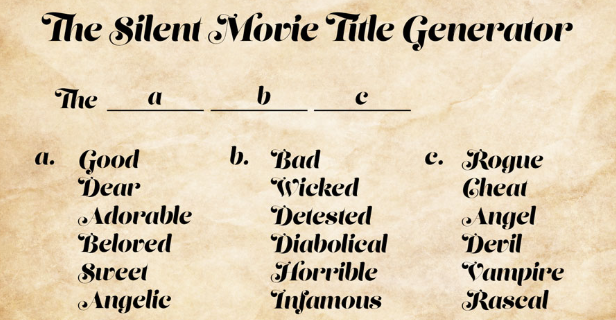When learning a new language, knowing how to express “fun in Spanish” can make conversations much more enjoyable. In Spanish, there are two primary ways to say “fun” depending on how it’s used. The word diversión is used as a noun, meaning an activity or thing that brings amusement. On the other hand, divertido is the adjective used to describe something as fun, like saying a game or party is fun. Understanding these simple terms will make it easier for you to describe fun moments, whether you’re on vacation, with friends, or celebrating a special occasion.
Understanding fun in Spanish is essential for every learner. Not only does it help you describe your feelings or experiences, but it also opens doors to understanding Spanish culture better. In addition to diversión and divertido, you can also learn different expressions and phrases that convey fun in various contexts. For instance, “¡Qué divertido!” is a common phrase used to express “How fun!” Knowing how to use these words properly will allow you to connect with native speakers and add excitement to your conversations.
What is Fun in Spanish? A Simple Explanation
When it comes to expressing “fun in Spanish,” the most common word you will come across is diversión. This is used as a noun to describe fun as an activity, event, or experience that brings enjoyment. For example, La diversión comenzó cuando llegamos al parque means “The fun began when we arrived at the park.” On the other hand, when you’re talking about something that is fun or enjoyable, you use the adjective divertido (fun). An example would be La fiesta fue muy divertida meaning “The party was very fun.” Understanding the difference between these two words can help you communicate better in Spanish and describe various experiences in your daily life. Whether you’re talking about fun activities, fun people, or fun events, learning these two words will make your Spanish sound more natural and exciting.
Understanding Diversión and Divertido: The Two Faces of Fun in Spanish
In Spanish, diversión and divertido are two sides of the same coin. Both words are closely related, but they are used in different ways. Diversión is a noun, referring to the concept of fun or amusement. It is something you experience or engage in, like una tarde de diversión (an afternoon of fun). On the other hand, divertido is an adjective, used to describe something that is fun, enjoyable, or amusing. For instance, un juego divertido (a fun game) or una película divertida (a fun movie). Both words help you talk about fun in various situations, but knowing when to use each one will ensure you sound more fluent and confident in your Spanish conversations. It’s also important to note that divertido must agree in gender and number with the noun it describes, which is a typical rule in Spanish grammar. So, learning these two terms is a great starting point for anyone wanting to express fun in Spanish correctly.
How to Use Fun in Spanish in Everyday Conversations
Using fun in Spanish in everyday conversations is simple once you know the key words and phrases. You can easily incorporate diversión and divertido into your sentences to talk about enjoyable experiences. For example, if you’re chatting about a fun outing with friends, you might say, Tuvimos mucha diversión en el parque (We had a lot of fun at the park). If you’re talking about an event, you could say, La fiesta fue muy divertida (The party was very fun). Another way to use fun in Spanish is by asking others about their plans or opinions. For example, ¿Te divertiste en el concierto? (Did you have fun at the concert?). These phrases are simple, yet effective ways to bring fun into your everyday Spanish conversations. You can also use expressions like ¡Qué divertido! (How fun!) to show excitement and engagement during conversations. The more you practice using these words in different contexts, the more comfortable you will become in making fun a part of your Spanish-speaking life.
Common Phrases to Express Fun in Spanish
Learning common phrases to express fun in Spanish is an excellent way to improve your communication skills. Some popular expressions include ¡Qué divertido! (How fun!), which you can say when you’re impressed by something enjoyable, or Pasamos un rato divertido (We had a fun time). Another phrase often used is Me divertí mucho (I had a lot of fun), which you can use to describe your feelings after an enjoyable event. If you’re planning an event, you might say Este evento va a ser muy divertido (This event is going to be so fun). Additionally, ¡Diviértete! (Have fun!) is a simple yet popular phrase to wish someone an enjoyable time. These phrases are not only useful but also reflect the energy and joy that the Spanish language often brings. By incorporating these into your conversations, you’ll quickly feel more natural while speaking Spanish and be able to share your enjoyment with others in a culturally appropriate way.
Why Learning Fun in Spanish Will Improve Your Conversation Skills
Learning how to express fun in Spanish is an essential step in becoming fluent in the language. Why? Because talking about fun activities, events, and experiences is a common part of everyday conversations, and it helps build rapport with others. When you know how to describe something as divertido or diversión, you can share your excitement and connect with people on a more personal level. It also allows you to ask others about their interests, making conversations more interactive and engaging. For instance, if you know how to ask ¿Qué te parece la fiesta? (What do you think about the party?), you can invite others to share their fun experiences. Moreover, learning these simple but impactful words and expressions enhances your understanding of Spanish culture, where fun and enjoyment are often central themes in daily life. Mastering these expressions allows you to navigate social situations more smoothly and comfortably, whether you’re at a gathering, a celebration, or just chatting with friends.
Fun in Spanish: Adjective or Noun? Understanding the Difference
The distinction between the adjective divertido and the noun diversión is key to mastering how to talk about fun in Spanish. Divertido is used when describing something that is fun, like a fun game or fun person. It must agree with the noun in gender and number. For example, una película divertida (a fun movie) is feminine and singular, while unos juegos divertidos (some fun games) is plural. On the other hand, diversión is a noun that refers to fun as a concept, activity, or event. You can say La diversión es importante (Fun is important) or Mi diversión favorita es bailar (My favorite fun activity is dancing). Understanding when to use each word will help you speak more naturally in Spanish. It also prevents confusion when trying to describe situations and activities that are fun or enjoyable. So, by practicing these words and their correct usage, you’ll become more confident and accurate in your Spanish conversations.
Exploring the Cultural Significance of Fun in Spanish-Speaking Countries
Fun is an important part of life in Spanish-speaking countries, where celebrations and social gatherings are often lively and full of energy. Whether it’s the famous Spanish fiesta or a family gathering in Latin America, fun in Spanish is closely tied to culture and tradition. For example, Spain is known for its vibrant festivals, such as La Tomatina or Running of the Bulls, where people come together to enjoy exciting activities and share a sense of fun and community. Similarly, in Latin American countries, music, dance, and parties are central to their cultural identity. The phrase divertirse (to have fun) is often used when talking about these lively events, and it emphasizes the importance of enjoying life. Understanding the cultural context of fun in Spanish-speaking countries gives learners a deeper appreciation of the language and enhances their ability to connect with people from these regions. It also opens the door to learning more about different customs, traditions, and celebrations that revolve around having a good time.
Top Activities That Are “Fun in Spanish”
When learning how to say “fun in Spanish,” it’s also helpful to know what activities are considered fun. In Spanish-speaking countries, people enjoy a wide range of activities that bring joy and excitement. For instance, bailar salsa (dancing salsa) is a popular pastime in many Latin American countries, while ir a la playa (going to the beach) is a classic fun activity in Spain. Other common fun activities include ver películas (watching movies), jugar fútbol (playing soccer), and hacer senderismo (hiking). Additionally, ir a conciertos (going to concerts) and asistir a festivales (attending festivals) are also typical ways of having fun in Spanish-speaking cultures. Each activity provides its own unique form of fun, and by learning how to express these activities in Spanish, you can broaden your vocabulary and better communicate your experiences with native speakers. Whether you’re talking about a favorite hobby or planning a group outing, knowing these terms will help you express your excitement and enjoyment with others.
From Parties to Games: Using Fun in Spanish in Different Contexts
Using fun in Spanish in different contexts requires understanding the appropriate words and phrases for each situation. For example, when talking about a fun party, you would say una fiesta divertida (a fun party), whereas for a fun game, you might say un juego divertido (a fun game). When it comes to social gatherings, divertirse is often used to express how enjoyable the experience was. You can say, Me divertí mucho en la fiesta (I had so much fun at the party). These phrases allow you to describe fun experiences accurately in various contexts, whether you’re discussing a lively game night with friends or a family celebration. It’s important to remember that divertido changes based on gender and number, so when talking about multiple fun events or activities, you would say eventos divertidos (fun events) or juegos divertidos (fun games). By knowing how to use these words in different contexts, you’ll be able to express fun in Spanish confidently and fluently.
Tips for Expanding Your Spanish Vocabulary with Fun Expressions
Expanding your Spanish vocabulary with fun expressions is an excellent way to improve your language skills and make your conversations more exciting. One tip is to listen to how native speakers use these expressions in real-life situations, such as in movies, songs, or during conversations with friends. For example, ¡Qué divertido! (How fun!) is a simple phrase you can use to express excitement. Another helpful tip is to practice speaking with others, using phrases like Me divertí mucho (I had a lot of fun) or Este evento va a ser muy divertido (This event is going to be fun). Also, reading books or articles in Spanish that describe activities or events is a great way to learn new fun expressions. The more you practice using fun phrases, the more naturally they will come to you. By expanding your vocabulary with these expressions, you’ll not only sound more fluent but also gain a deeper understanding of how fun is expressed in Spanish-speaking cultures.
Conclusion
Understanding fun in Spanish is a great way to make your conversations more lively and exciting. By using words like divertido and diversión, you can easily express your joy and share fun moments with others. It’s important to remember the difference between these two words and when to use each one. This will help you speak Spanish more naturally and confidently.
So, next time you’re having a good time, remember how to describe it in Spanish. Whether you’re talking about a fun game, a fun party, or just having a good time with friends, knowing the right words will help you enjoy your conversations even more. Keep practicing, and soon you’ll be a pro at talking about fun in Spanish!
FAQs
Q: What is divertido in Spanish?
A: Divertido is the word for “fun” when used as an adjective to describe something that is enjoyable or fun, like a fun movie or a fun game.
Q: What does diversión mean in Spanish?
A: Diversión is a noun that means “fun” or “amusement.” It refers to the activity or experience of having fun.
Q: How do I say “Have fun!” in Spanish?
A: You can say ¡Diviértete! to tell someone to have fun.
Q: Can I use divertido for both boys and girls?
A: Yes, but remember that divertido changes to divertida for feminine nouns. For example, un juego divertido (a fun game) for a masculine noun, and una película divertida (a fun movie) for a feminine noun.
Q: Is there a difference between me divertí and me lo pasé bien?
A: Yes! Me divertí means “I had fun,” and me lo pasé bien means “I had a good time.” Both express enjoyment but in slightly different ways.



